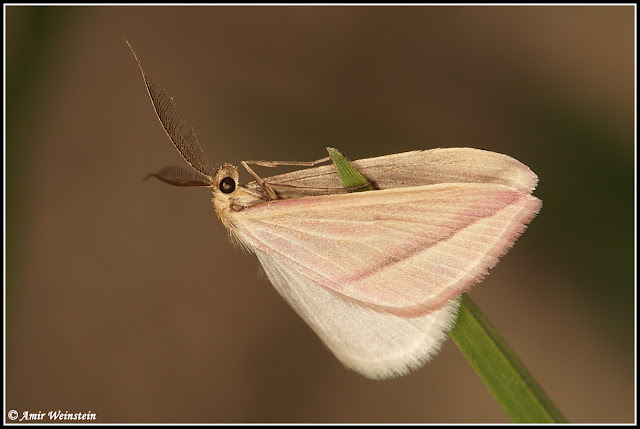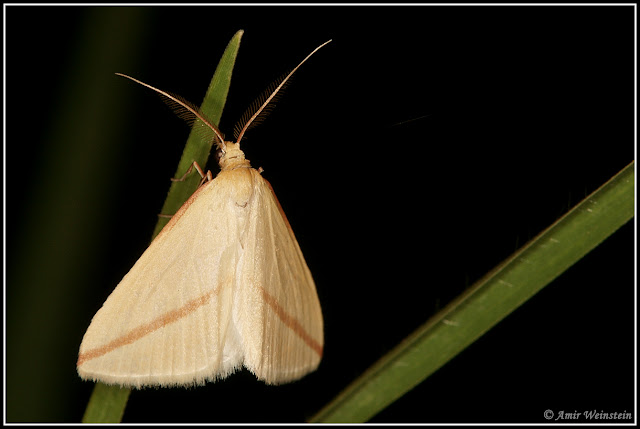Amir Weinstein is an Israeli naturalist, photographer and blogger. He started his blog “Insects – Little Bugs in a Big World” in 2008. Most pictures published in the blog were taken in Israel, in different locations and different seasons.
The idea for the blog came from realizing that although there is vast amount of information about terrestrial arthropods in scientific publications, there was very little available to the Hebrew speaking public. With the growing popularity of digital photography he realized that more and more people photograph small organisms and are looking to learn more about them, so he decided to start a blog that would combine images, scientific information and interesting stories about the fascinating world of insects and other arthropods.
 Since starting the blog, Amir posted about 250 posts, including over 20 posts about moths. The blog gets over 4,000 hits per months, and many readers contact Amir requesting help identifying insects and seeking information.
Since starting the blog, Amir posted about 250 posts, including over 20 posts about moths. The blog gets over 4,000 hits per months, and many readers contact Amir requesting help identifying insects and seeking information.
Amir says: “Although the blog is in Hebrew, I hope you will be interested in taking a look and enjoying the photos. I’d love to answer any questions, or read your comments. Thanks for visiting my blog”.
 The blog became a major source of information in Hebrew and is used by teachers, educators and students.
The blog became a major source of information in Hebrew and is used by teachers, educators and students.
If you have any questions, you are welcome to leave a comment in the posts, or reply via the contact form. The blog also has a Facebook page.
In 2010, together with Dr. Michal Samuni-Blank, of the department of Biology and Environment, the University of Haifa in Oranim, Amir started a new project:
 The main goal of this project is to explore the species richness in a private backyard. The yard (0.25 acres) is located on a main road in Binyamina, Israel. The project started in 2010 and by now more than 700 species have been documented in the yard. Among them are 120 species from the order Lepidoptera representing 25 families and 103 species of moths. In addition, during the survey, a new species of spider from the genus Cyclosa (Araneidae) has been discovered. This project has both scientific and public education aspects as the project was presented in scientific conferences in Israel as well as in the US. It also has a Facebook page that presents, on a daily basis, new findings from the yard.
The main goal of this project is to explore the species richness in a private backyard. The yard (0.25 acres) is located on a main road in Binyamina, Israel. The project started in 2010 and by now more than 700 species have been documented in the yard. Among them are 120 species from the order Lepidoptera representing 25 families and 103 species of moths. In addition, during the survey, a new species of spider from the genus Cyclosa (Araneidae) has been discovered. This project has both scientific and public education aspects as the project was presented in scientific conferences in Israel as well as in the US. It also has a Facebook page that presents, on a daily basis, new findings from the yard.
